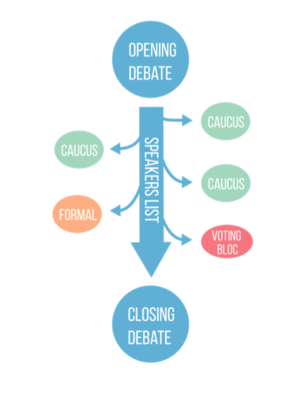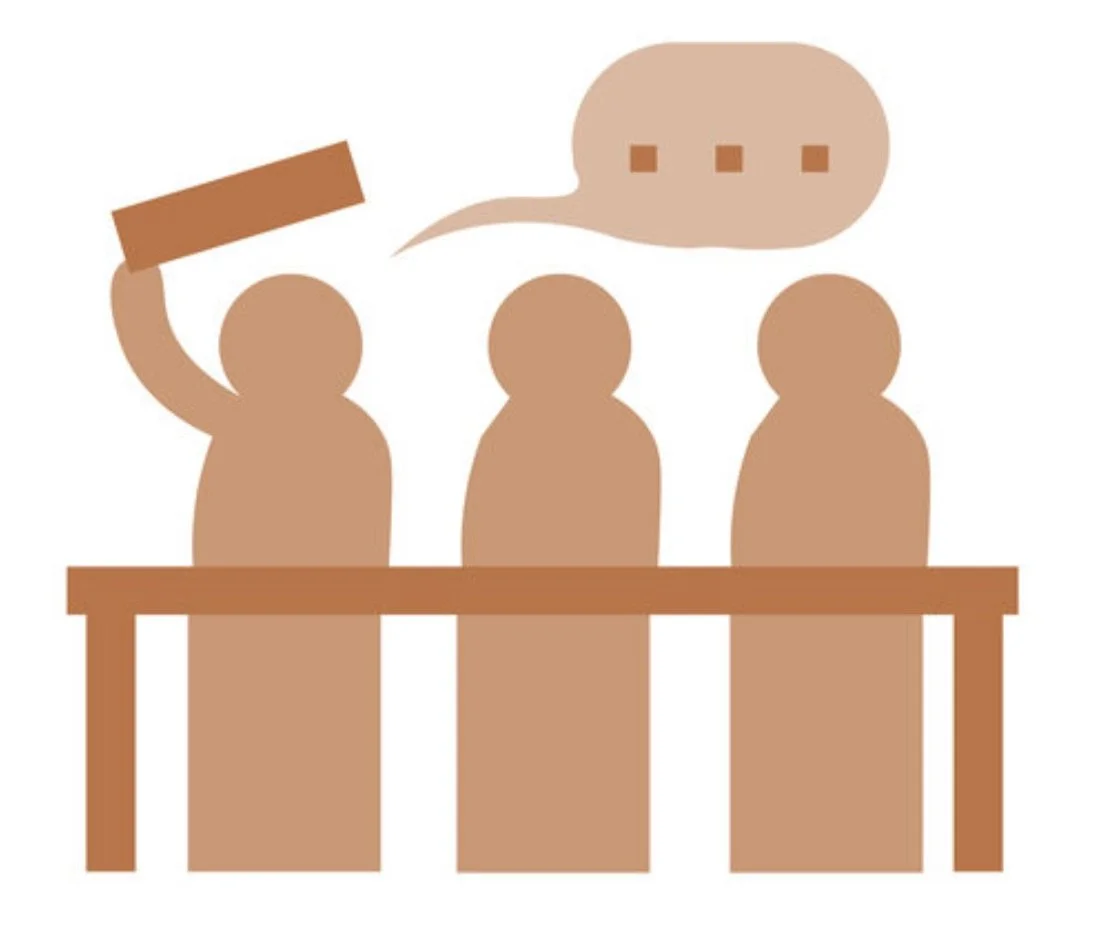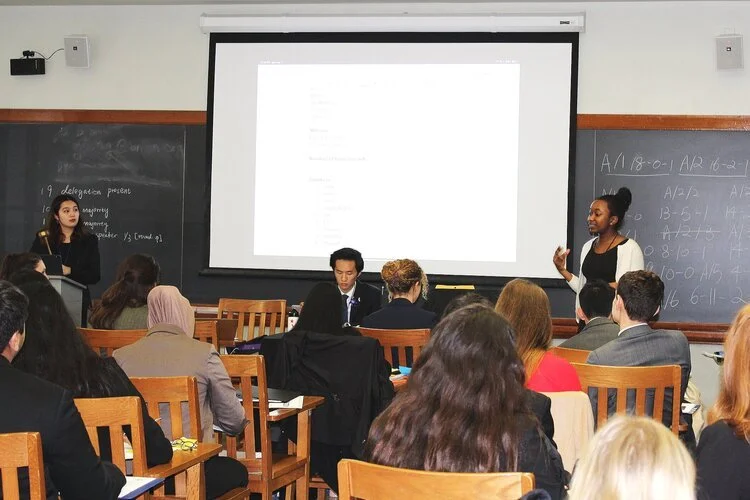Committee Procedure & Flow
BMUN uses parliamentary procedure because it is the most efficient way to present arguments and reach a conclusion in the MUN setting. Our committees are meant to flow in a way that empowers delegates to lead themselves from opening speeches to robust resolutions.
It is important to note that this page describes standard BMUN procedure, not procedure used by other conferences. Please refer to each conference's guide for their specific rules and procedure guidelines.
Standard committee will flow from opening to closing of debate, with periodic diversions from the speaker's list
Standard committee flow
OPENING DEBATE
Your chair will open debate by establishing a quorum, calling the committee to order, introducing the conference, and taking attendance.
During attendance, a delegation my respond "present" or "present and voting". If a delegation is "present and voting", they may not abstain on substantive votes; those that are simply "present" may.
Votes fall into two categories, substantive and procedural. Substantive votes are votes on resolutions and amendments, where procedural votes are votes on motions that have been presented to the floor. No delegation may abstain from procedural votes.
The chair will then entertain a motion to open debate. This requires a 50% + 1 majority to pass. Immediately following this, any delegate can motion to reset the agenda should they want to discuss the second topic in the topic synopsis first. This requires a 50% + 1 majority to pass.
SPEAKER'S LIST
The next step in proceeding to debate is a motion to open the speaker's list, again requiring a 50% + 1 majority to pass.
The standard time for a speech on the speaker’s list is 1 minute and 30 seconds. When there are 10 seconds remaining in the speech, the dais will tap the gavel lightly to indicate the time is about to elapse. At the end of the 1 minute and 30 seconds, the chair will tap the gavel harder. By default, each speech is followed by two 30-second comments from any delegate.
If you feel it's appropriate, you may motion to change the standard speaking time, number or length of comments, or comments to questions. This would require a 50% + 1 majority to pass.
Points & MOtions
Points and motions provide a concrete way for you to raise your placard and interact with the chair and divert from the speaker's list. They can change the pace of committee, inform the committee, or right a wrong in procedure. They serve a variety of purposes, as outlined below:
POINTS
Point of Personal Privilege – If a concern regarding the personal comfort of a delegation arises, a request may be made to the chair, who will then reconcile the issue.
Ex: Using the restroom, room is too cold, microphone is too soft
Point of Order – If the committee is proceeding in a manner that is contrary to these rules, a delegation may bring the concern to the attention of the chair, who will then judge the validity of the claim and reconcile the issue.
Point of Inquiry – If there is a question regarding the rules and/or committee proceedings, a delegation may ask for clarification from the chair, who will be obliged to reply to the inquiry.
The above points of procedure are listed in order of precedence, meaning they are taken and resolved in this order.
PROCEDURAL MOTIONS
Motion to Open/Adjourn Debate – The beginning/end of the committee’s session as dictated by the official conference schedule. (50% + 1 vote required)
Motion to Suspend Debate – A break in committee as dictated by the official conference schedule. A motion for suspension must specify a time at which the committee will reconvene. (50% + 1 vote required)
Motion to Re-set the Agenda – The change in the order of topics. The default order of topics will be dictated by the order they are presented in the topic synopsis. (50% + 1 vote required)
Motion to Open the Speakers’ List – Used to determine the order of speeches. The Delegation that makes the motion will be offered to speak first. (50% + 1 vote required)
Motion for a Moment of Silence – An un-chaired portion of committee dedicated to prayer or meditation. The chair will decide if such a motion is appropriate and will allot the proper amount of time. A motion for a moment of silence must specify a purpose. (chair approval required)
A chair will rule points and motions either in order, out of order, or dilatory based on the state of committee and the flow of debate. A motion that is in order is valid and can be voted upon. A motion that is out of order is invalid. For example, if someone were to motion for a moment of silence in the middle of a moderated caucus, that would be out of order. A motion that is dilatory is a motion that is not conducive to the flow of committee. For example, a 1-minute unmoderated caucus would not provide the proper amount of time to complete any substantial work.
caucuses
Caucuses are a way to move debate in a different direction or to accelerate the pace of conversation. There are three types of caucuses: moderated, unmoderated, and formal.
MODERATED CAUCUSES
A moderated caucus is a portion of committee that allows individual delegates of the committee to state their opinions about a specific topic in debate. The pace is more rapid than a speakers list and serves to debate issues more in depth. This can occur to discuss a portion of the topic that the committee is focusing on or to debate opinions of working papers.
To motion to enter into a moderated caucus, a delegate must motion for a moderated caucus, stating the topic, the duration for each statement and the total time allotted for all statements. The committee will then vote on this motion, and subsequently enter into moderated caucus should simple majority (50% + 1) be reached. The country who motions for the passing moderated caucus is the first to speak out of courtesy.
Ex.: “The delegate of New Zealand would like to motion for a moderated caucus on the topic of world avocado shortages for a total of six minutes with a 45 second speaking time per delegate.”
UNMODERATED CAUCUSES
MUN differentiates itself from other forms of speech and debate by not only having time for traditional speeches, but also allowing delegates to show off their political maneuvering and ability to communicate in a much more informal manner: the unmoderated caucus. An unmoderated caucus is a segment of time during committee in which delegates are free to move about the room and freely engage in debate with other delegates in small groups. Normally, MUN debate has some level of structure, whether it’s running through a speaker’s list, giving quick thoughts in moderated caucus, or presenting ideas in formal caucus. However, unmoderated caucus differs from this by allowing complete freedom for delegates to engage with any other delegate on whatever topic they want. Additionally, during this time, delegates will form resolution groups with other delegates that have similar policy and will eventually write resolutions that are later presented in formal caucus.
To enter into an unmoderated caucus, a delegate must motion for an unmoderated caucus, stating the topic and the duration of the caucus. The committee will then vote on this motion, and subsequently enter into unmoderated caucus should simple majority (50% + 1) be reached.
Ex.: “The delegation of China motions for an unmoderated caucus for 10 minutes for the purpose of forming blocs”
FORMAL CAUCUSES
A formal caucus is a portion of committee that allows one-third of the sponsors of each resolution currently debated to present their resolution and answer questions. To enter into a formal caucus, a delegate must motion for a formal caucus, stating the speaking time for each resolution. The committee will then vote on this motion, and subsequently enter into formal caucus should simple majority (50% +1) be reached. Any time left after the speeches may be yielded to questions. The delegates may ask the chair to tap the gavel partially through the time to indicate that time remaining will be dedicated to questions. No follow-up questions can be asked; if a delegate is not satisfied with a response to one of their questions, they must re-raise their placard, be called on by the chair again, and ask a new question.
Ex.: “The delegate of Equatorial Guinea would like to motion for a formal caucus with 10-minute speaking time per resolution.”
voting bloc
Voting bloc is a section of debate that is conducted by mainly Bloc A, B and specialized committees near the end of each topic. It serves for the committee to vote on the resolutions presented in formal caucus. Generally, the committee moves into voting bloc when delegates have either reached a consensus or debate has been exhausted. Remember that the aim of MUN and BMUN is for delegates to jointly find a common solution after debate and to compromise to pass resolutions.
To move into voting bloc from general debate, a delegate must motion to move into voting bloc.
Ex.: “The delegate of São Tome and Princípe would like to motion to move into voting bloc.”
This motion is one of the three motions in BMUN procedure that requires a two thirds (2/3) majority vote by the committee instead of the usual simple majority (50% + 1). In addition, there must be two speakers for and against moving into voting bloc. Voting in voting bloc is conducted as below:
1. Amendments to specific resolutions are voted upon first. Should the amendment pass, the amended resolution will then be voted upon.
2. Then all other resolutions will be voted upon in the order they were received by the dais.
VOTING
The chair will ask for all those in favor of the resolution to raise their placards and the number of raised placards will be tallied. Then the chair will ask for all opposed, and those votes will be tallied. Finally, the chair will ask for all abstaining, and those will be tallied. The chair will then announce, “by a vote of (# votes for)/(# votes against)/(# members abstaining) this resolution (passes/fails).”
A roll call vote is used to ensure a precise tally of votes and to be used only for draft resolutions. A chair can elect to use a roll call vote in a close vote, or it could be requested by a delegate. If requested by a delegate, the chair must approve it. A roll call vote will be taken in the English alphabetical order of the delegations.
Yes: Indicates support for the draft resolution
No: Indicates rejection of the draft resolution
No with Rights: The delegation will be given the opportunity to explain its “no” vote, after voting has concluded.
Abstain: Refrains from voting
Pass: The delegation will wait until the rest of the committee has voted before making a decision.
To pass a resolution, only simple majority (50% +1) is required. Once all the resolutions on the table have been voted upon, a delegate must motion to move out of voting bloc with a simple majority.
In addition, during voting bloc no delegate is allowed to leave the room and no one is allowed to enter the room (advisors and BMUN staff included).
CLOSING DEBATE
Prior to ending debate, the chair will entertain a motion to move out of voting bloc (50% + 1 vote required), select the committee’s rapporteur (usually by popular vote of the committee), and remind delegates to clean up after themselves and turn in conference evaluations. Rapporteurs are responsible for communicating to the rest of the conference the activities of the committee at closing ceremonies. They will then entertain a motion to adjourn.





